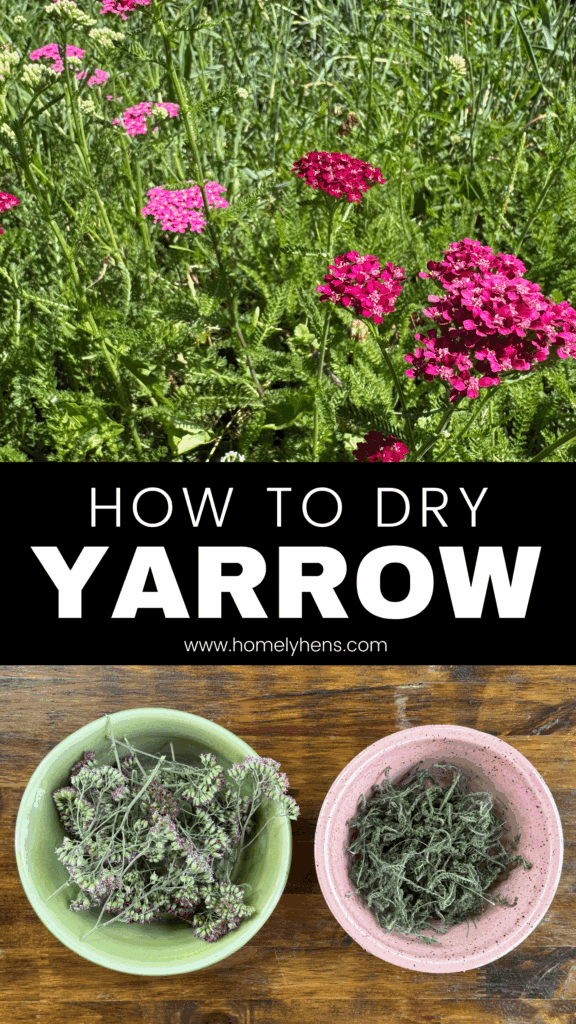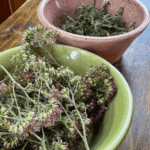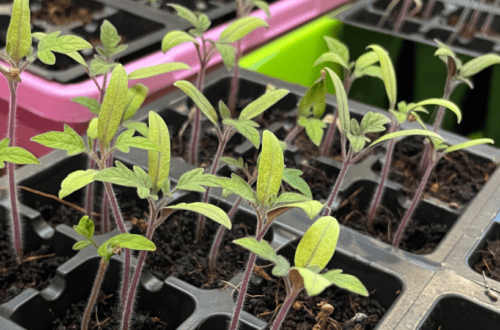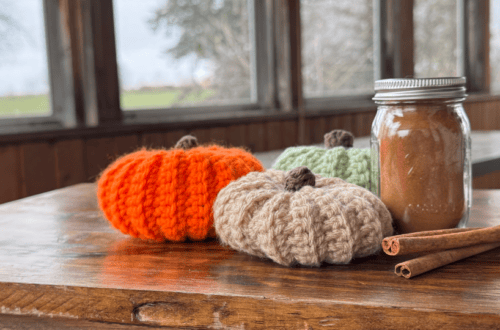How to Dry Yarrow Flowers and Leaves
Drying yarrow at home is a simple and rewarding way to preserve this beautiful and beneficial wild plant. If you’ve been wondering how to dry yarrow for use in teas, salves, herbal remedies, or ornamental bouquets, this guide will walk you through exactly when to harvest and how to dry both the flowers and leaves properly.
Whether you’re gathering wild yarrow or growing it in your herb garden, preserving it the right way helps you get the most from its healing properties. From natural wound care to soothing skin care, dried yarrow is a staple in any homestead apothecary.
For more herbal tips, remedies, and how-tos, don’t miss our Natural Living and Herbal Remedies page.
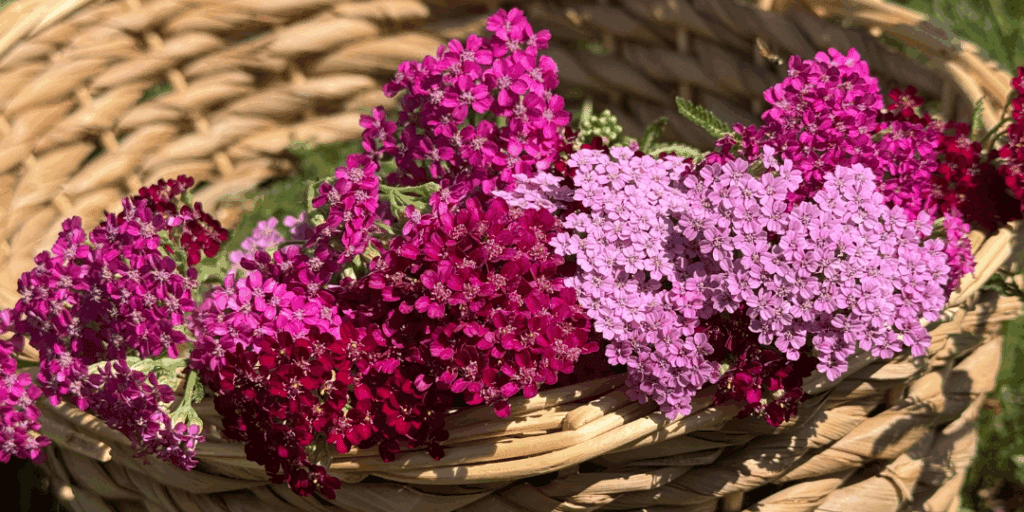
This post contains affiliate links. This will not cost you anything but will help us offset the cost of running the blog. We only share products we use and would recommend to a friend. Thank you for your support! Click ‘HERE’ for more info.
Quick Summary Instructions
- Step 1: Pick leaves and cut flowers, leaving some of the stem.
- Step 2: Spread out leaves and flowers with stems on a drying rack, separately.
- Step 3: Dry flowers for 10-12 hours and leaves for 3-4 hours at about 100ºF until fully dried.
- Step 4: Store in an airtight container.
Supplies Needed
If you’re using a dehydrator to dry your yarrow leaves and flowers, you’ll want a good quality one. We love this dehydrator because it doesn’t contain any plastic. Many dehydrators have a lot of plastic, including the trays that your herbs and flowers will sit on.
Sheers or Scissors
Something clean to cut the yarrow with is convenient to have! Cutting the stem instead of pulling it or trying to break it is easier and better for the plant as a whole. When you leave some of the stem, it reduces plant shock and encourages regrowth.
Jars for Storage
You’ll want airtight containers to store your yarrow flowers or leaves. Keeping moisture out of the jars is essential for keeping them dry.
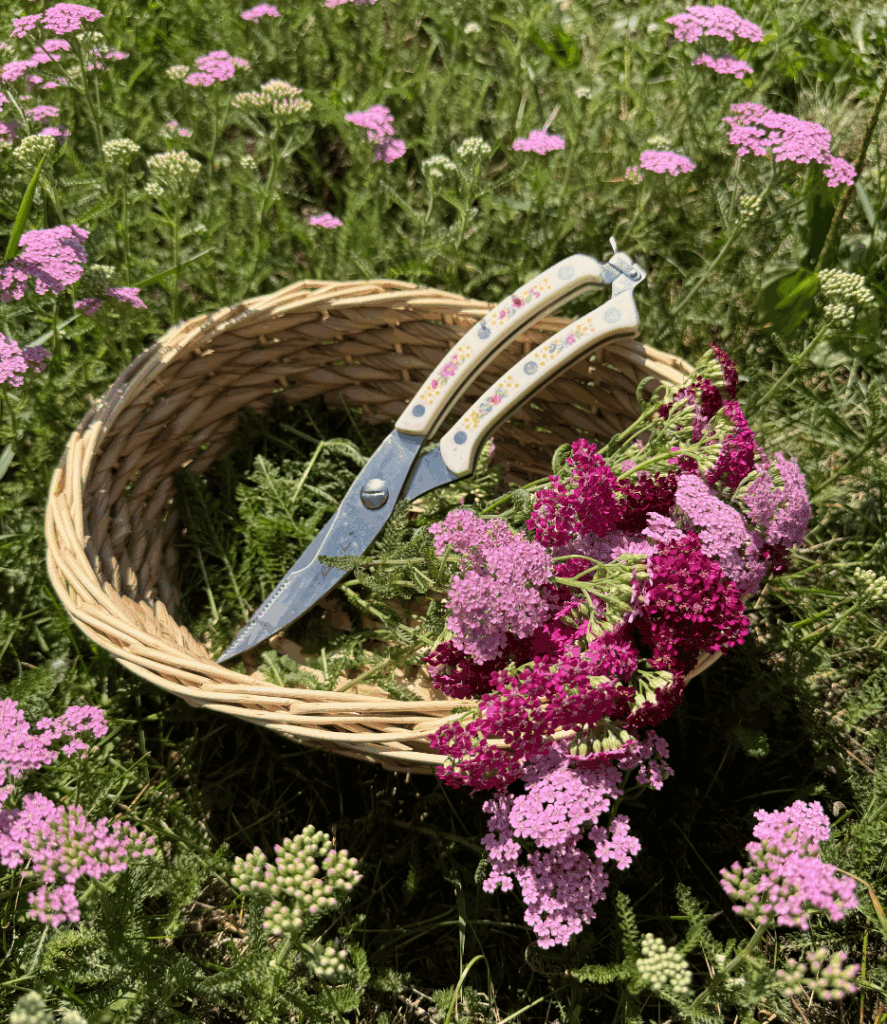
Fresh Yarrow Flowers and Leaves
The star of the show! You’ll want to harvest yarrow leaves before the flowers start blooming for the most potency. Flowers should be harvested as soon as they bloom, at the peak of their freshness.
Always remember, when harvesting herbs, only harvest about 1/3 of the plant at a time and don’t cut the stems all the way to the ground. This will leave enough leaves for the plant to continue to thrive and won’t cause too much stress to the plant. Wait 2-3 weeks between harvests.



Benefits of Yarrow Flowers
While white yarrow (Achillea millefolium) is the most traditional for medicinal use, pink, light pink, maroon, and other colored yarrow can also be beneficial, depending on the variety.
All yarrow is beautiful in your garden or wildflower patch and can be dried to add to decorations or ornamental flower arrangements.
White yarrow is the most commonly used in herbal medicine — it’s considered more potent, especially for:
- Skin Soothing: Great for making oils, salves, and bath soaks to calm itchy or irritated skin
- Gentle Immune Support: Often used in teas to help with colds, fevers, or inflammation
- Relaxation: Can be added to herbal blends to help you wind down and rest
- Beauty Products: Their delicate look and scent make them perfect for bath salts and decorative herbal items
Other colored yarrow can still be used for medicinal purposes, but they aren’t as potent. Some ornamental hybrids (often bright yellow or orange) may be bred more for appearance and may have lower medicinal potency, but they are not harmful.
What are Yarrow Leaves Good For?
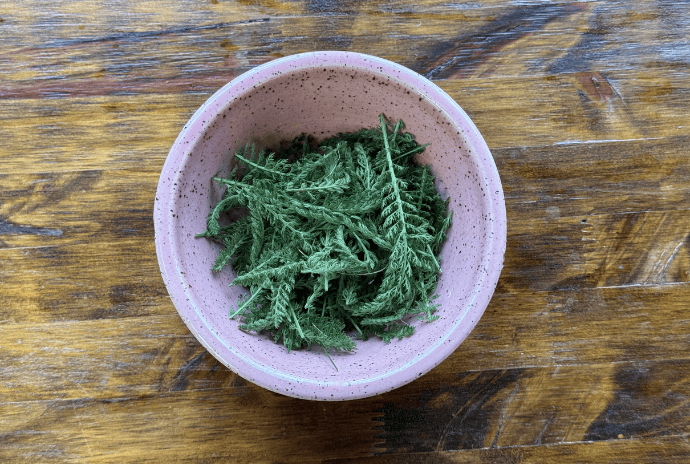
Yarrow flowers and leaves are both beneficial parts of the plant. They have some different uses. Yarrow leaves are used for:
- Wound Care: Traditionally used to stop bleeding and help heal minor cuts, scrapes, and bug bites
- Salves and Powders: Crushed or infused for natural first-aid salves or herbal powders
- Digestive Help: Used in teas or tinctures to ease bloating, gas, or menstrual cramps
- Herbal Oils: Infused into oils for use in balms and skin-healing remedies
Step-by-Step Instructions on How to Dry Yarrow Flowers and Leaves
Drying Yarrow Flowers Using a Dehydrator
Using a dehydrator is best if you’re using your yarrow for medicinal or skin care purposes, and the color fading is not as important.
Yarrow flowers are ready to harvest when they are in full bloom! Cut the flowers with 2-3 inches of stem still attached for easy handling. You can cut the stem off if you want for faster drying time or if you have a large batch and need more space in the dehydrator.
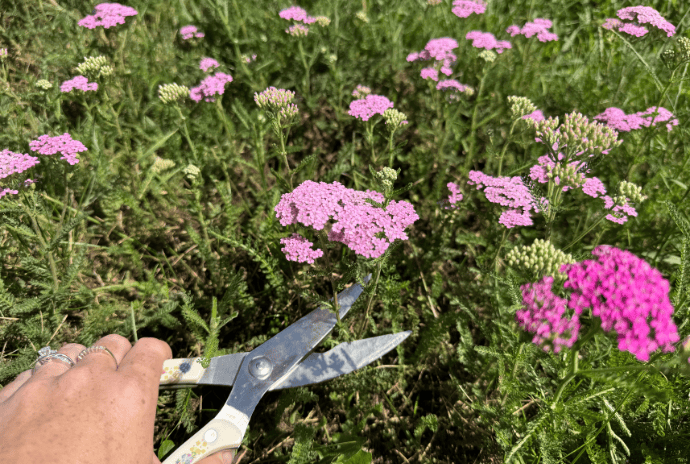
Spread out the flowers on your dehydrator tray. Leave some space in between for good airflow. Dry flowers for 10-12 hours at about 100ºF, or until fully dried. Drying time will fluctuate based on what dehydrator you’re using. Check flowers periodically to make sure they’re not over-drying.
I sometimes use my Ninja Air Fryer to dehydrate herbs when I have a small batch. It typically takes longer to get them fully fried this way.
Store yarrow flowers in an airtight container.
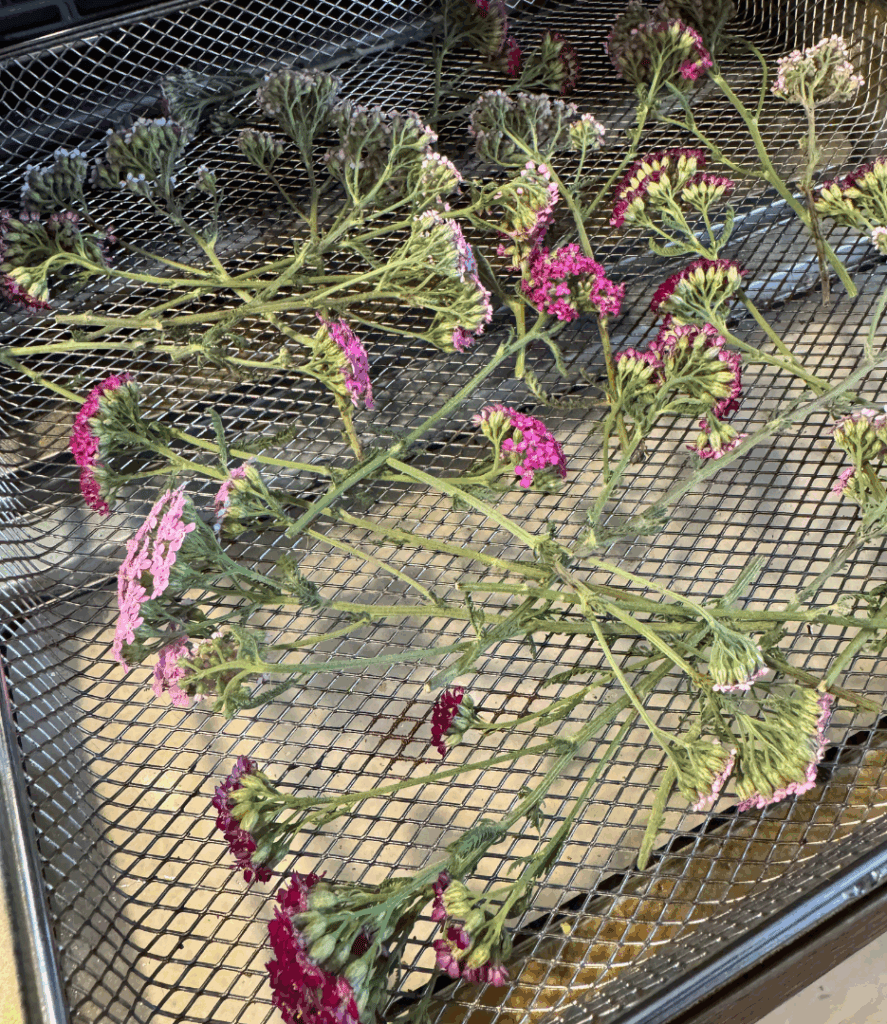
Drying Yarrow Leaves Using a Dehydrator
Yarrow leaves are best harvested right before the flowers bloom, which is usually late spring or early summer. Leaf potency is highest just before blooming when the plant’s energy is still concentrated in the leaves.
Leaves are more fragrant and medicinal before flowering pulls nutrients upward into the blossoms. After flowering, the leaves may become tougher, less vibrant, and slightly bitter. You can still harvest the leaves after the flowers start blooming; however, they will be slightly less potent and more bitter.
After cutting the leaves, make sure they are clean and dry. Spread them out on the tray, leaving plenty of space for airflow.
Dehydrate for 3-4 hours at 100ºF, checking after 2 to see if they are dried. Yarrow leaves are fragile and don’t hold much moisture, so they don’t take very long to dry. The leaves will crumble easily when fully dried.
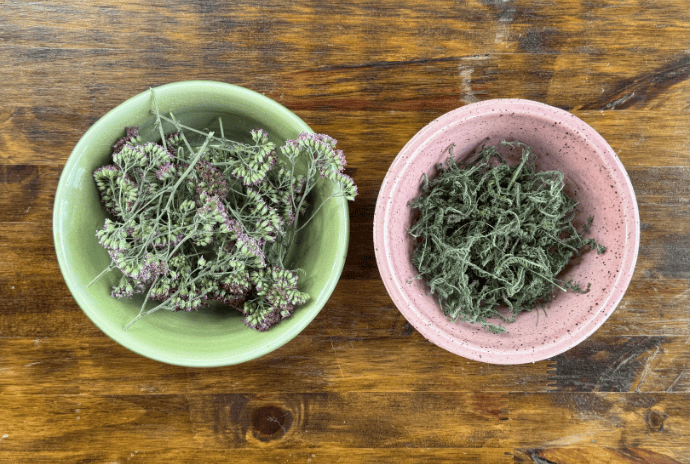
Air Drying Yarrow Flowers
Air-drying yarrow is great if you want to preserve the color of your yarrow, especially if you plan to use it in an ornamental bouquet or add it to bath soaks for color.
Tie the yarrow into small groups using string or yarn and hang it upside down in a dry, dark space. Dry for 5-10 days, depending on how humid it is in your space. The flowers are dry when they feel papery, and the stems snap without bending.
Other Herbs and Flowers to Dry & Use
Frequently Asked Questions about Drying Yarrow
Yarrow is not recommended for use during pregnancy. Yarrow can stimulate the uterus and may increase the risk of uterine contractions or miscarriage. It also has properties that promote menstrual flow, which is not safe during pregnancy.
For the most potent leaves, harvest before the plant fully flowers. Pick in the morning after the dew has dried for the highest oil content. Harvest flowers once they have fully bloomed.
Store dried yarrow in an airtight glass jar in a cool, dark location. Keep it out of direct sunlight and humidity to preserve potency. Properly dried and stored yarrow can last up to 1 year.
Dried yarrow is used in herbal teas, salves, bath soaks, oil infusions, and natural wound care. It has astringent, anti-inflammatory, and antimicrobial properties that make it great for skincare and first-aid remedies.
Yes, especially in people who are sensitive to ragweed or other daisy-family plants. Reactions may include skin irritation, rash, or itching, particularly when used topically. Always do a patch test before using yarrow-infused products.
How to Dry Yarrow Flowers and Leaves
Equipment
- Dehydrator optional
- shears or scissors
- jar for storage
Materials
- yarrow flowers or leaves
Instructions
- Cut leaves and flowers, leaving some of the stem on the flower for easy handling.
- Spread out leaves or flowers on a dehydrator tray. Dry them separately because they have different drying times.
- Dry flowers for 10-12 hours and leaves for 3-4 hours at about 100ºF until fully dried. Check periodically to avoid over-drying. The flowers are dry when they are papery and the stems snaps without bending. Leaves are dry when they easily crumble.
- Store in an airtight container.




